Concrete is a composite material composed of coarse aggregates linked together with a fluid cement that hardens over time. Asphalt concrete is also a type of concrete, in which the cementitious material is bitumen.
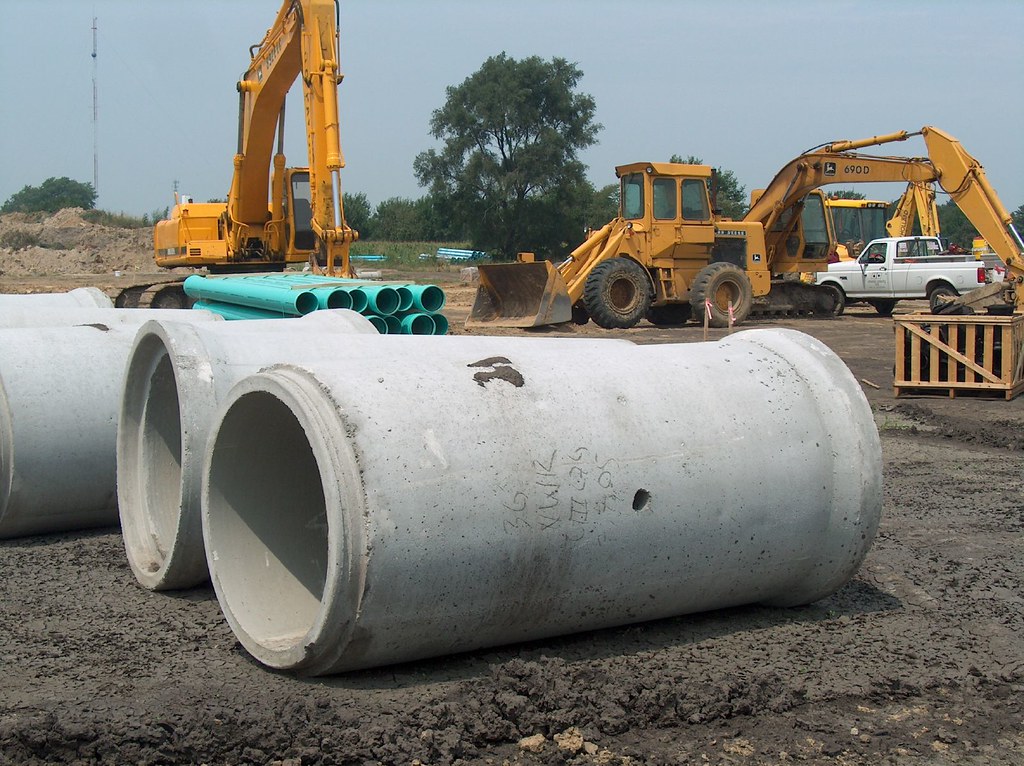
Image source: https://search.creativecommons.org/photos/319b1f32-3185-48e7-8d35-43e1c3df0f64 by Pam_Broviak
What is Concrete?
The most popular and used man-made material on Earth is concrete. Thousands of years ago, we used it to build civilizations, but then our knowledge of how to do it was lost.
Today, concrete is used more than any other material.
Unlike aluminum, steel, or plastic, the word ‘concrete’ does not refer to a single material. It can be any number of substances that combine rocks or gravel with some kind of adhesive material.
Concrete is just a pile of rubble mixed with water and cement, forming a rocky jelly that can be poured into a mold and shaped as desired.
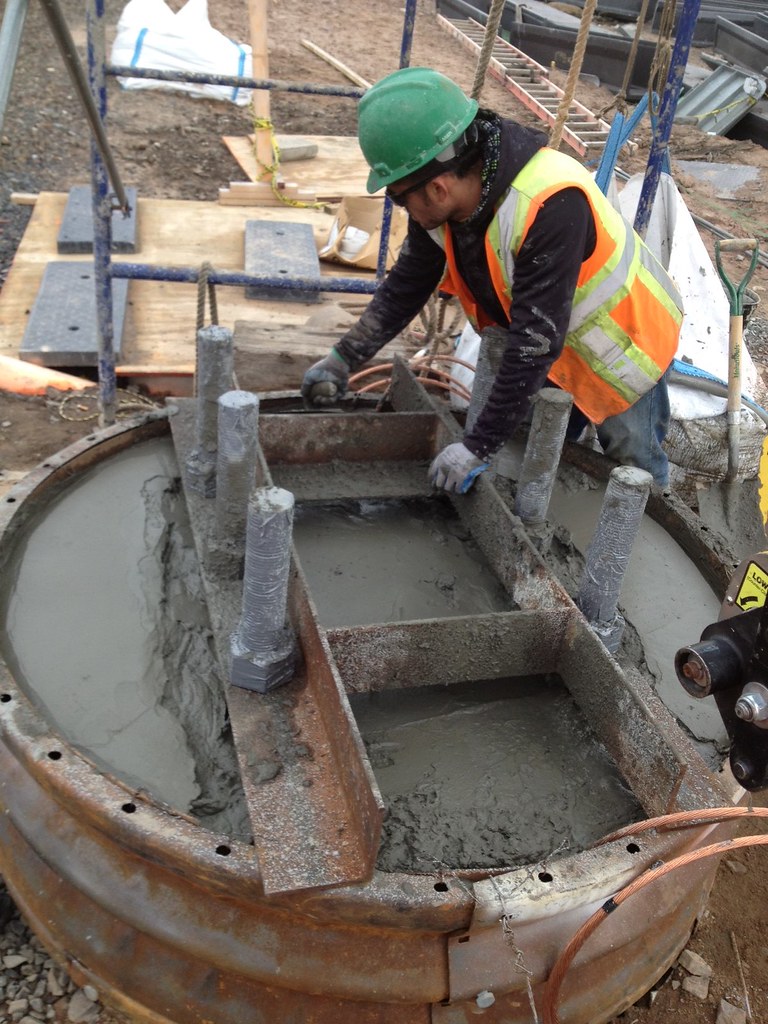
Image source: https://search.creativecommons.org/photos/16c7d22d-eff3-41da-8c58-8ddf2f653969 by MTA C&D – EAST SIDE ACCESS
How is Concrete created?
In its simplest form, concrete is a mixture of pulp (made up of cement and water) and aggregates or rocks in which the paste coats the surface of fine and coarse aggregates. Following a chemical reaction called hydration, the paste hardens to form a rock-like mass.
The key feature of concrete can be seen in this process: it is plastic and malleable when freshly mixed, strong and durable when hardened. The key to strong and durable concrete lies in the careful proportioning and mixing of the ingredients. A mixture that does not have enough paste will be difficult to position and will produce rough surfaces and porous concrete, vice versa with an excess of paste it will be easy to spread and will produce a smooth surface, but the concrete could break more easily.

Image source: https://www.cement.org/cement-concrete/how-concrete-is-made
The quality of the paste determines the character of the concrete. The strength of the paste depends on the ratio between water and cement – the weight of the mixing water divided by the weight of the cement. High-quality concrete is produced by lowering the water-cement ratio as much as possible without sacrificing its workability. Almost all natural water can be used for mixing concrete. Excessive impurities in the mixing water can affect the setting time and strength of concrete, and also cause efflorescence, stains, reinforcement corrosion, volume instability, and shortened life.
Types of Concrete?
We have several types of concrete. The following are the most common:
- Regular concrete is indicative of concrete produced following mixing instructions posted on cement packages, using sand or other common material as aggregate, and mixed in makeshift containers. The ingredients in a particular blend depend on the nature of the application. Regular concrete can typically withstand a pressure of about 10/40 MPa, with lighter uses.
Typically, a batch of concrete can be made using 1 part Portland cement, 2 parts dry sand, 3 parts dry stone, 1/2 part water. The parts are in terms of weight not volume. - High-strength concrete has a compressive strength greater than 40 MPa. It is produced by lowering the water-cement (W/C) ratio to 0.35 or less. To prevent the formation of free calcium hydroxide crystals in the cement matrix, which could reduce the resistance to the cement-aggregate bond, silica smoke is often added. Low W/C ratios and the use of silica fume make concrete mixes less workable, which could be a problem in high-strength concrete applications where dense reinforcement cages may be used. To compensate for the reduced workability, superplasticizers are added to high-strength blends. The aggregate must be carefully selected for high-strength mixes
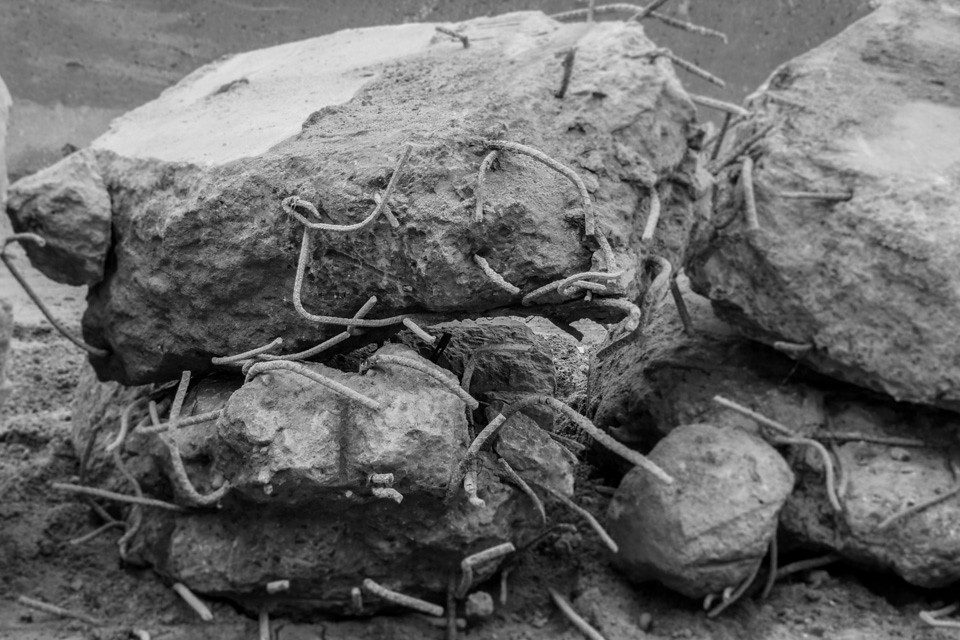
image source: https://search.creativecommons.org/photos/fa3baf3b-99dd-4809-9bd1-8f0f85ac11c3 by Mike GL
- Stamped concrete is concrete with a superior surface finish. After a concrete floor has been laid, floor hardeners are impregnated onto the surface and a mold is stamped to give a textured surface finish. The surface is cleaned and sealed to give protection, after sufficient hardening.
- High-performance concrete (HPC) is a term for concrete that has higher standards than most common applications but is not limited to strength. High-strength concrete is also high-performance, but not always all high-performance concrete is high-strength.
What are the stage of Concrete working?
- Mixing
Mixing concrete is a very important step in obtaining good final properties. The mixing evenly distributes the aggregate throughout the cement paste, making sure it is saturated in water, and removing large air gaps. The lower the workability, the greater the energy and mixing time required.

image source: https://search.creativecommons.org/photos/548ecc84-baf4-4d7e-8009-87b553b520d9 by Chris Allen
- Placing
Once the concrete has been adequately mixed, it must be placed into the formwork that defines its final position and shape. If the concrete is to be reinforced, the rebar must already be in place so the concrete can flow around it. Concrete that is to be pumped has more stringent requirements for workability. If the concrete is too dry, it will not pump well, while if it is too wet it will tend to segregate.
Placing Concrete for 12kV Ductbank West of EMH-25A & B Image source:https://search.creativecommons.org/photos/77936a62-1b9c-4f68-8696-bf00b8e04456 by MTA C&D – EAST SIDE ACCESS
- Consolidation
Once the concrete is in place, it should be consolidated to remove large air gaps and to make sure it has drained into all corners of the formwork. This process is also called compacting. The two most common consolidation methods are vibration and roller compaction. Vibration is a mechanical process that transfers shear energy pulses to concrete. Roller compaction is a simpler and cheaper technique suitable for roads and large concrete structures such as dams. A specialized vehicle is driven over the fresh concrete to guide it into position and remove excess air, in this case, the fresh concrete used is very rigid so that it can support the weight of the machine. - Finishing
Finishing refers to any final treatment of the concrete surface after it has been consolidated. This can be as simple as pushing a wide blade across the fresh concrete surface to make it flat (shaving). Floating is a compacting and smoothing process of the surface performed when the concrete begins to harden. This would be the standard procedure for driveways and sidewalks. - Curing
Once the concrete had been laid and consolidated it must rest to develop good final properties. As the concrete hardens and gains strength, then the critical period is the first few hours and days after laying. Proper curing of concrete comes down to two factors, keeping it moist and sustained. The hydration of the cement involves the reaction with water. To cure properly, the cement paste must be completely saturated with water. This will not only prevent the concrete from acquiring its full strength but will also generate internal stresses which can cause cracking. To keep the concrete moist, it can be covered with plastic or damp fabric to prevent evaporation, or periodically sprayed with water.
What are Concrete characteristics?

image source: https://search.creativecommons.org/photos/e19d3a9d-ef24-4255-ae0d-8e3698bdcb88 by J Jakobson
- Strength and Durability
- Versatility
- Low Maintenance
- Affordability
- Fire-resistance
- Thermal mass
- Locally Produced and Used
- Energy Efficiency in Production
How was Concrete used throughout history?
Over two thousand years ago, at the height of the Roman empire, the port city of Pozzuoli was a lively center of military and commercial activity. Every day, from Pozzuoli ships, loaded with useful goods, including grains, iron, weapons, and pozzolana, ashy volcanic sand formed in the nearby Campi Flegrei supervolcano.
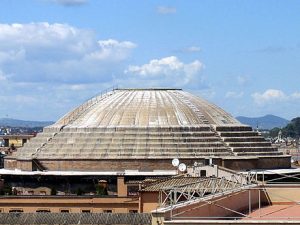
image source: https://en.wikipedia.org/wiki/Concrete#/media/File:Pantheon_dome.jpg
The Romans exported volcanic eruptions because this sand was special. When mixed with water it would form a mortar strong enough to bond pieces of rock together into an impenetrable, load-bearing material. As the Roman philosopher Seneca observed, the “dust at Puteoli [Latin name of the city] becomes stone if it touches water.” Nobody knew why. It turns out that pozzolana is a mixture of silica oxides and lime, two of the three key ingredients in cement (the third being water). A Stanford geochemist has discovered how this unusual ash is formed.
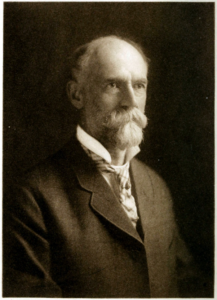
image source: https://commons.wikimedia.org/wiki/File:The_Ransome_book;_how_to_make_and_how_to_use_concrete_(1917)_(14784269352).jpg

image source:https://search.creativecommons.org/photos/7c39aa86-5d9d-4038-a465-e0606513807f
The deep interior of Campi Flegrei’s caldera is stuffed in limestone, a soft and brittle rock composed of calcium carbonate (CaCO3). When geothermally heated water washes the limestone walls of the caldera, it triggers a decarbonation reaction, releasing CO2 gas and leaving calcium hydroxide behind.
The geothermal fluids circulating within the Campi Flegrei bring some of this lime closer to the surface, where it combines with silica-rich ash to form an impenetrable, concrete-like rock. But eventually, enough pressure builds up inside the volcano that this caprock bends and breaks. When this happens, the same ingredients that make up the cement are spewed skyward, like pozzolana ash.
The geochemist suspects that the ancient Romans first saw pozzolana harden in the cement in the seawater surrounding Campi Flegrei. They co-opted the natural process, mixing into small pieces of pumice — a porous volcanic rock that forms when superheated magma cools rapidly. And so Roman concrete was born. It has become an iconic building material of the ancient world, and the reason why structures such as the Colosseum and the Pantheon, have survived to the present day.
After the fall of the Roman empire, the art of concrete was almost forgotten. It gradually returned centuries later, spreading since 1824, when Joseph Aspdin developed and patented Portland cement.
info sources:
http://gizmodo.com/what-is-concrete-1721627320
https://www.cement.org/cement-concrete/how-concrete-is-made
https://en.wikipedia.org/wiki/Types_of_concrete
https://www.wbcsdcement.org/index.php/key-issues/sustainability-with-concrete/properties-of-concrete
https://www.civilstudies.com/2020/07/types-of-concrete.html
https://www.constrofacilitator.com/the-advantage-and-purpose-of-concrete-mixed-designs/
